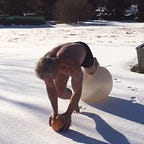How Much Protein Do We Need? Muscle and aging
The most basic questions about what’s good for your health have never generated more interest, anxiety, research, marketing or debate. Any media exposure guarantees immersion in the great health do’s and don’ts dilemma.
What is the best diet? How much water should I drink? Do I really need 8 hours of sleep? How often should I exercise? Is this normal aging? Daily alcohol is good, right?
A Google search for “health” spits out 3.9 billion entries. Unfortunately this reflects confusion not comprehension.
The progressive loss of muscle, strength and function is one of the most noticeable and consequential aspects of aging. While there is consensus on the necessity of protein for muscle maintenance there is disagreement regarding how much.
The Google entry “how much protein a day?” yields 441 million hits. Not bad for a macronutrient. The Recommended Dietary Allowance (RDA) for protein for adults is 0.8g per kg body weight. That’s about 56 grams per day for the average man and 46 grams per day for the average women. RDA’s are defined as the average daily level of intake sufficient to meet the nutrient requirements of 98% of healthy people.
Like many health directives, the one-size-fits-all-formula makes no sense. To suggest that an 18 year old woman requires and processes protein in the same way her 90 year old great grandfather does is obviously absurd. So what do we know about age-related changes in this arena?
Aging is associated with changes in body composition.
Between the ages of 30 and 60, the average adult gains one pound of fat and looses a half-pound of muscle every year. So as you sit down, and it’s fair to say you’ll want to sit down, to celebrate your 60th birthday, you will be packing 30 more pounds of fat and 15 less pounds of muscle than on your 30th.
Happy birthday.
These changes represent disease, not aging.
The most powerful factors driving this type of aging are activity level and diet. The accumulation of fat drives a vicious cycle of inflammation, insulin resistance, slowed metabolism and muscle loss. Activity level and diet also regulate muscle maintenance.
I have described what we know about the most effective kinds of exercise to prevent age-related muscle loss.
What does the research data tell us about aging, nutrition and muscle maintenance?
Muscle mass is determined by the balance of anabolism (muscle protein synthesis) and catabolism (muscle breakdown). Essential amino acids in dietary protein stimulate anabolism and are the most important nutritional inputs for muscle maintenance. Leucine in particular, is considered the primary nutritional regulator of muscle anabolism.
This anabolic response decreases with age. However higher doses of essential amino acids (10–15 grams with at least 3 gram of leucine) induce a response comparable to that of young adults.
Absorption of dietary protein also decreases with age. In young adults, slowly digested proteins (e.g. casein) produce greater retention than more rapidly metabolized proteins. In older populations, greater protein synthesis occurs with fast-digested proteins such as whey. Older adults also appear to retain more protein when consumed in liquid rather than solid form.
Approximately one-third of adults over 50 fail to meet the RDA for protein, 0.8 grams per kilogram body weight. A recent scholarly review drawing data from 49 studies with 1863 participants suggests that the adult protein RDA should be doubled. Protein supplementation was shown to significantly increased muscle strength and size when combined with resistance exercise. Supplementation beyond 1.62 grams per kilogram body weight per day provided no further gains.
So there you have it. Neither adequate nutrition nor exercise alone will preserve muscle mass, strength and function. Good data indicates that we need more protein to maintain muscle mass as we grow older.
Bottom line: eat enough, move more.
